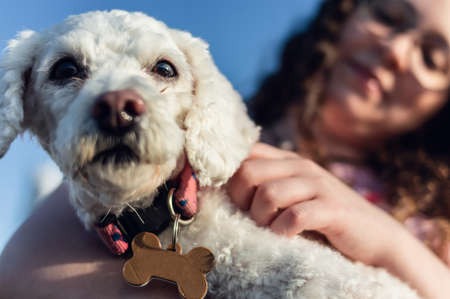1. Understanding Positive Reinforcement
Positive reinforcement is a powerful tool in the world of animal training, especially when working with exotic pets like parrots, reptiles, or small mammals. At its core, positive reinforcement means rewarding your pet for displaying behaviors you want to see more often. When the pet does something desirable—like stepping onto your hand or following a cue—you immediately provide something they enjoy, such as a tasty treat, verbal praise, or a favorite toy.
How Positive Reinforcement Works in Animal Training
The basic idea is simple: animals are more likely to repeat behaviors that lead to good outcomes. With positive reinforcement, you’re focusing on encouraging what you want instead of punishing what you don’t want. This approach builds trust and helps create a strong bond between you and your exotic pet.
Common Rewards Used in Positive Reinforcement
| Type of Reward | Examples | Best For |
|---|---|---|
| Treats/Food | Fruit pieces, nuts, insects, special pellets | Birds, reptiles, small mammals |
| Praise/Attention | Verbal cues like “Good job!”, gentle petting | Mammals (ferrets, rabbits), some birds |
| Toys/Enrichment | Bells, chew toys, climbing branches | Parrots, sugar gliders, rodents |
| Freedom/Choice | Exploring outside the enclosure for a few minutes | Tame reptiles, birds that enjoy flight time |
Why Positive Reinforcement Is Preferred for Exotic Pets
Unlike punishment or forceful methods, positive reinforcement is gentle and respectful of the animal’s comfort level. Exotic pets can be sensitive and may become fearful if handled roughly or corrected harshly. Using rewards makes training fun and stress-free. It also helps reduce problem behaviors by teaching your pet what you do want them to do instead.
Key Benefits of Positive Reinforcement for Exotic Pets:
- Builds trust between owner and pet
- Makes learning new behaviors enjoyable for both parties
- Lowers stress and fear in sensitive species
- Encourages communication through clear signals and consistent feedback
- Adaptable to many types of exotic animals and their unique needs
2. Unique Challenges of Training Exotic Pets
Understanding the Differences: Exotic vs. Traditional Pets
Training exotic pets is not the same as training dogs or cats. While traditional pets like dogs and cats have been domesticated for thousands of years, most exotic animals are only a few generations removed from the wild, if not wild-caught themselves. This makes their behavior, needs, and reactions very different.
Behavioral Factors
Exotic pets often have instincts and natural behaviors that don’t align with a typical home environment. For example, parrots might chew furniture because they’re wired to strip bark in the wild, while reptiles may hide for long periods because it helps them avoid predators. These instincts can make it challenging to apply standard positive reinforcement techniques used for dogs and cats.
Comparison Table: Dog/Cat vs. Exotic Pet Training Challenges
| Aspect | Dogs/Cats | Exotic Pets |
|---|---|---|
| Domestication Level | Highly domesticated | Wild or semi-wild instincts |
| Socialization Needs | Enjoy human interaction | Varies widely (some prefer minimal contact) |
| Communication Cues | Readily understand basic commands & cues | Cues must be species-specific and subtle |
| Attention Span | Moderate to high, especially with treats or toys | Often short or easily distracted by environment |
| Sensitivity to Stress | Generally moderate, adapt to routine changes | High; stress can cause illness or aggression |
Environmental Factors
The environment plays a huge role in training exotic pets. Many exotics need specific temperatures, humidity levels, and light cycles just to feel comfortable enough to learn. Loud noises, unfamiliar objects, or even a new scent can cause stress or defensive behaviors. Creating a safe and controlled setting is essential before any training begins.
Physiological Considerations
The physical differences between exotic pets and traditional pets also matter. Some birds have sensitive respiratory systems that react badly to household sprays or candles. Reptiles may only be active during certain times of day. Small mammals might have specialized diets that limit what treats you can use for rewards.
Key Physiological Differences to Keep in Mind:
- Sensory Perception: Many exotics rely more on smell or sight than sound, so visual or scent cues often work better than verbal ones.
- Treat Preferences: Not all exotic pets can eat common treats like dog biscuits; rewards must be safe and appealing for each species.
- Energy Cycles: Nocturnal pets (like some reptiles and rodents) may be uninterested in daytime training sessions.
- Sensitivity: Some animals are prone to stress-related health issues if routines change too quickly or if they feel threatened during training.
This unique mix of behavioral, environmental, and physiological factors means that trainers need patience, creativity, and flexibility when working with exotic pets—always using positive reinforcement tailored to the individual animal’s needs.

3. Applying Positive Reinforcement to Exotic Species
Understanding Positive Reinforcement for Exotic Pets
Positive reinforcement is all about rewarding your pet when they do something you want to see more of. Unlike punishment, which can create fear or stress, positive reinforcement helps build trust and encourages good behavior. This approach works well not only for dogs and cats but also for exotic pets like birds, reptiles, and small mammals.
Practical Strategies for Different Exotic Pets
Birds
Parrots, cockatiels, and other pet birds respond very well to positive reinforcement. Use treats, gentle praise, or favorite toys as rewards. For example, if you want your parrot to step up onto your hand, give them a small piece of fruit each time they do it correctly.
| Behavior | Reward Example |
|---|---|
| Stepping onto hand | Treat (sunflower seed), verbal praise |
| Returning to cage on cue | Toy or head scratch |
| No screaming during training | Favorite food morsel |
Reptiles
Reptiles like bearded dragons or tortoises can learn through positive reinforcement too. For instance, if you want your bearded dragon to come toward you, offer a tasty insect or leafy treat as soon as they move in your direction. Consistency is key—reptiles learn slower than mammals but will associate the reward with the action over time.
| Behavior | Reward Example |
|---|---|
| Coming when called (target training) | Mealworm or cricket |
| Allowing gentle handling | Dandelion green or fruit slice |
| Basking in designated spot | Treat placed in basking area |
Small Mammals (Rabbits, Guinea Pigs, Ferrets)
Small mammals are curious and intelligent, making them perfect candidates for positive reinforcement training. Use tiny bits of their favorite veggies or treats to encourage actions like coming when called, using a litter box, or allowing grooming.
| Behavior | Reward Example |
|---|---|
| Coming when called by name | Tiny carrot piece, gentle petting |
| Litter box use | Cucumber slice or favorite snack |
| Sitting calmly for nail trims/grooming | Lettuce leaf or berry piece after session |
Tips for Effective Training Sessions with Exotics
- Keep sessions short: Exotic pets have short attention spans. Aim for 5-10 minutes per session.
- Use high-value rewards: Find out what your pet loves most—whether it’s a special treat, toy, or gentle scratch—and use it only during training.
- Be patient and consistent: Some exotics take longer to learn new behaviors. Always reward right after the desired action so they make the connection.
- Avoid force: Let your pet choose to participate. If they seem scared or uninterested, take a break and try again later.
- Create a calm environment: Minimize loud noises and distractions during training so your pet can focus on you.
This approach helps exotic pets feel safe while learning new skills and strengthens the bond between you and your unique companion.
4. Building Trust and Strengthening the Human-Animal Bond
When it comes to training exotic pets, building a strong relationship with your animal is just as important as teaching them new behaviors. Consistent use of positive reinforcement helps create an environment where your exotic pet feels safe, understood, and valued. This not only makes training more effective but also leads to a deeper connection between you and your pet.
How Positive Reinforcement Builds Trust
Positive reinforcement means rewarding your pet when they do something right. This could be giving a treat, offering praise, or providing a favorite toy. When your exotic pet receives rewards for good behavior, they start to associate you with positive experiences. Over time, this builds trust because your pet learns that you are a source of good things, not stress or fear.
The Benefits of Consistency in Training
Using the same cues and rewards every time you train helps your exotic pet understand what’s expected of them. Consistency makes the learning process clear and predictable, which reduces confusion and anxiety. A calm, relaxed animal is more likely to learn quickly and respond positively to training sessions.
| Benefit | Description |
|---|---|
| Trust | Your pet feels safe with you and is more willing to interact. |
| Reduced Stress | Predictable routines help lower anxiety in exotic pets. |
| Stronger Bond | Shared positive experiences lead to a closer relationship. |
Everyday Examples of Bond-Building Activities
– Rewarding a parrot for stepping onto your hand
– Offering treats when a ferret uses their litter box
– Giving gentle praise when a reptile allows handling
These small moments add up over time, helping you build a friendship with your exotic pet based on mutual respect and understanding. With patience and positivity, training becomes more than just teaching tricks—it becomes a way to connect and share joyful moments together.
5. Common Mistakes and Tips for Success
Understanding the Challenges
Training exotic pets with positive reinforcement can be rewarding, but it also comes with unique challenges. Many American pet owners unintentionally make mistakes that slow progress or cause frustration for both them and their pets. Knowing what to avoid and what to do instead can make all the difference.
Frequent Pitfalls in Training Exotic Pets
| Mistake | Why It’s a Problem | Better Approach |
|---|---|---|
| Using Inconsistent Rewards | Confuses your pet and makes learning unpredictable. | Always reward desired behavior immediately and consistently. |
| Punishing Undesired Behavior | Leads to stress, fear, or aggression in exotic animals. | Ignore undesired actions and reinforce positive ones instead. |
| Skipping Small Steps | Overwhelms your pet, causing anxiety or shutdowns. | Break training into tiny, manageable steps and celebrate progress. |
| Lack of Patience | Training takes longer with exotic pets; rushing leads to setbacks. | Be patient and allow your pet to learn at its own pace. |
| Poor Understanding of Species Needs | Can cause health issues or behavioral problems if needs aren’t met. | Research your pet’s specific requirements before starting training. |
| Inadequate Safety Precautions | Certain exotics may bite, scratch, or escape if not handled safely. | Create a secure environment and use proper handling techniques. |
Tips for Effective Positive Reinforcement Training
Select Appropriate Rewards
Different exotic pets respond to different motivators. Some may love fruit pieces, others may prefer mealworms or special toys. Try several options to find what your pet loves most.
Create a Consistent Routine
Set aside short, regular training sessions—about 5-10 minutes each day. This helps your pet know what to expect and builds trust over time.
Watch Your Pet’s Body Language
If your pet seems stressed or uninterested, take a break. Forcing training can damage your relationship and slow progress. Look for signs of relaxation like calm movements, curiosity, or taking treats willingly.
Use Clicker Training When Appropriate
A clicker or a consistent sound (like a whistle) can help mark correct behaviors instantly. This is especially helpful for birds, reptiles, and small mammals who may not connect praise with actions as quickly as dogs do.
Example: Safe Training Setup Checklist
| Checklist Item | Description |
|---|---|
| Escape-Proof Space | No open windows or holes where your pet could slip out during training. |
| Treats Within Reach | Keep high-value treats handy so you can reward instantly. |
| No Distractions | Turn off loud music or TV; limit the presence of other pets during sessions. |
| Sufficient Lighting | Your pet should see you clearly without being startled by bright lights. |
| Smooth Surfaces/Perches | Avoid sharp objects or unstable surfaces that could harm your pet. |
Final Tip: Track Progress Over Time
Keep a simple log of each session: what worked, what didn’t, and any breakthroughs. This helps you adjust your approach and celebrates how far you’ve come together!


